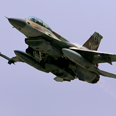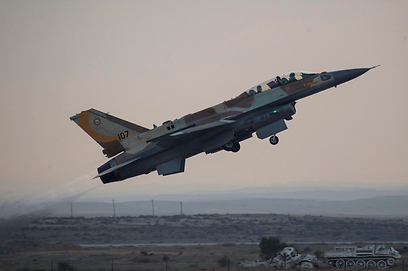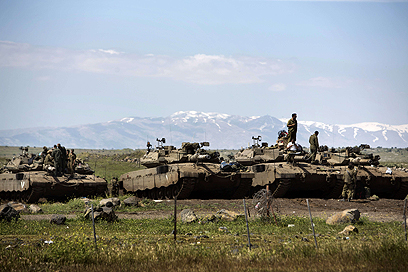
Report: Israeli airstrike directed at missiles from Iran
New York Times sheds light on IAF strike in Syria, says target was shipment of surface-to-surface Fateh-110 missiles from Iran stored at Damascus airport
Hours after the first reports of an Israeli strike in Syria, details about the mysterious attack continue to emerge.
The New York Times reported Saturday that the airstrike was directed at a shipment of advanced surface-to-surface missiles from Iran that Israel believed was intended for Hezbollah, according to American officials.
Related stories:
- Analysis: Attack into Syria – message to Iran
- Israel says hit Hezbollah-bound missiles
- US official: Israel conducted airstrike in Syria
The missiles, known as Fateh-110s, had been sent to Syria by Iran and were being stored at an airport in Damascus when they were struck in the attack, one American official said.
According to the paper, Syrians with knowledge of security and military matters confirmed the strike, saying that Iran had sent arms and rockets to Damascus International Airport intending to resend them to Hezbollah.
Syrian forces loyal to President Bashar Assad have used Fateh-110 missiles against the Syrian opposition, and some American officials are unsure whether the new shipment was intended for use by Hezbollah or by the Assad government, which is believed to be running low on missiles.
One American official, said the warehouse that was struck in the Israeli attack was believed to be under the control of operatives from Hezbollah and Iran’s paramilitary Quds force.
Also Saturday, a source at a rebel intelligence unit in Damascus said that F-16 jets carried out three strikes on the road connecting Damascus and Beirut.
One of the strikes, he said, hit a site near the Syrian army's fourth armored division in the city of al-Saboura. According to foreign sources, the jets carried out the attacks from Lebanese airspace.
The rebel source said that the attack targeted a Hezbollah-bound anti-aircraft missile convoy but according to recent estimates they were surface-to-surface missiles.
Earlier on Saturday, an Israeli official told the Associated Press that the shipment was not of chemical arms, but of "game changing" weapons bound for Hezbollah.

Israeli F-16 fighter jets (Photo: EPA)
Another Israeli source who spoke with the New York Times said that while chemical weapons draw much attention, Israel is far more concerned about advanced conventional weapons.
Additionally, Qasim Saad al-Din, a commander in the Free Syrian Army, said he does not believe the target was anti-aircraft missiles and noted that the group has yet to confirm the exact location of the strike.

IDF tanks on Syrian border (Photo: AFP)
"We estimate they were long range missiles of some sort with the ability to carry chemical substances," he said.
Another question that arose Saturday was whether Israeli jets had invaded Syrian airspace.
Based on initial indications, US officials told CNN they do not believe Israeli warplanes entered Syrian airspace to conduct the strikes. It was estimated the strike was carried out from Lebanon.
According to Reuters, Israel's air force possesses so-called "standoff" bombs that coast dozens of kilometers (miles) across ground to their targets once fired. That could, in theory, allow Israel to attack Syria from its own turf or from adjacent Lebanon.
Ynet's defense analyst Ron Ben-Yishai estimates the assault was not conducted from Lebanese airspace but from greater distance, possibly from over the sea. Israel's Rafael-manufactured "Popeye" system is capable of carrying out such strikes.
Last January, it was reported that the IAF attacked a weapons convoy en route to the Syria-Lebanon border. Damascus later admitted that a military research center in the Jamraya region had been bombed.
Some believe that Syria lied about the target to disguise the fact that it supplied Hezbollah with Russian weapons and SA-17 advanced anti-aircraft missiles.
Meanwhile, the IDF 's Northern Command raised its alert level in response to battles in the Syrian Golan area. Syrian opposition sources in Quneitra reported loud blasts caused by shelling in the demilitarized buffer zone. According to the sources, mortar shells hit several houses in the area.
- Receive Ynetnews updates directly to your desktop











